
Car ownership, while offering unparalleled freedom and convenience, inevitably comes with its share of responsibilities—many of which manifest as unexpected repair bills. Nothing quite blows a household budget faster than a significant car repair, leaving many motorists to wonder if fixing their vehicle is even financially viable. Unless a part is protected by a warranty, owners are often forced to shell out substantial sums to keep their vehicles running safely and efficiently.
Indeed, some car repairs stand out not just for their complexity, but for their staggering cost, frequently pushing into the four- or even five-figure range. These are the fixes that can be financially devastating, turning a routine trip to the mechanic into a moment of genuine anxiety. Understanding what constitutes these “most expensive” repairs is the first step toward preparing for or, ideally, preventing them.
In this in-depth guide, we delve into the most financially impactful automotive issues, drawing on extensive data to shed light on why these repairs hit so hard. Our aim is to empower you with practical knowledge to make informed decisions about your vehicle’s maintenance and longevity, helping you navigate the world of high-cost automotive care.

1. **Engine Replacement or Major Engine Repairs**The engine is the very heart of your vehicle, a complex machine whose catastrophic failure often presents the most financially daunting repair scenario. When an engine sustains severe damage—whether from extreme overheating, warped cylinders, or piston failure—the path forward frequently leads to an entire engine replacement or a major overhaul. This can be a tough financial decision, particularly for older vehicles, where the repair cost might easily surpass the car’s overall market value.
The costs associated with engine replacement are staggering, typically ranging from $7,000 to $10,000, according to various industry insights. This hefty price tag stems from several critical factors. The engine itself is an incredibly expensive component, especially a new or rebuilt unit. Moreover, the process demands countless hours of expert labor, often requiring the complete removal of the engine from the vehicle to diagnose internal issues and perform the intricate work of rebuilding or replacing it.
A major engine repair rarely involves just one component; it frequently necessitates the replacement of other crucial parts like sensors, belts, and associated systems, further inflating the total cost. Insights reveal that the worst and most expensive type of engine damage often involves the vehicle’s cylinders. If these central components break down, the car becomes undrivable, underscoring the severity and expense of such a repair.
To mitigate the risk of such a devastating financial blow, proactive maintenance is absolutely key. Regular oil changes are paramount, as is vigilant monitoring of coolant levels to prevent overheating—a common precursor to severe engine damage. Owners should never ignore the “check engine” light, as it often signals underlying issues that can escalate rapidly if left unaddressed. Paying attention to warning signs like knocking noises, excessive exhaust smoke, or a noticeable loss of power can help catch problems before they become catastrophic.
Read more about: Steer Clear: 12 SUVs That Will Drain Your Wallet with Costly Maintenance and Reliability Nightmares

2. **Hybrid High-Voltage Battery Replacement**While hybrid vehicles offer appealing fuel efficiency, they come with a hidden potential for one of the most expensive repairs: the replacement of their high-voltage battery. Unlike standard 12-volt batteries, hybrid batteries are complex systems made of numerous cells that work with the vehicle’s sophisticated onboard computer systems. When these crucial components fail, the cost to replace them can be truly shocking to owners.
RepairPal data indicates that a hybrid high-voltage battery replacement can range from $6,645 to $6,719, with other sources providing a broader range of $4,489 to an astonishing $17,657. These immense costs are primarily driven by the precious, rare materials used in their construction. Furthermore, the replacement process demands precise calibration and integration with the vehicle’s existing electronic systems, making it a job exclusively for trained technicians.
A significant contributing factor to the expense is also that almost all hybrid car batteries are projected to fail before the owner gets 10 years of use. The necessity of replacing the battery often implies that the associated computer system also needs attention, adding further to the overall bill, which can quickly sum up to $6,000 or more. This inherent lifespan limitation, combined with technological complexity, explains why the massive hidden costs, particularly battery replacement, are a significant deterrent for many drivers.
Fortunately, most EVs and hybrids come equipped with a robust battery warranty, typically guaranteeing against malfunction or total failure for 8 years or 100,000 miles. This warranty coverage can provide a crucial financial safety net during the initial years of ownership. However, once this warranty expires, the owner becomes solely responsible for the hefty replacement cost.
Beyond warranty protection, there are practical steps owners can take to extend the life of their hybrid battery. Avoiding prolonged exposure to extreme temperatures, both hot and cold, can help preserve battery health. Regular servicing of your hybrid vehicle, as recommended by the manufacturer, ensures that all systems are functioning optimally. Easing off rapid acceleration when possible can also reduce the strain on the battery, contributing to its longevity and potentially delaying this expensive repair.
Read more about: Navigating the Automotive Minefield: 12 Cars That Could Cost You a Fortune in Repairs
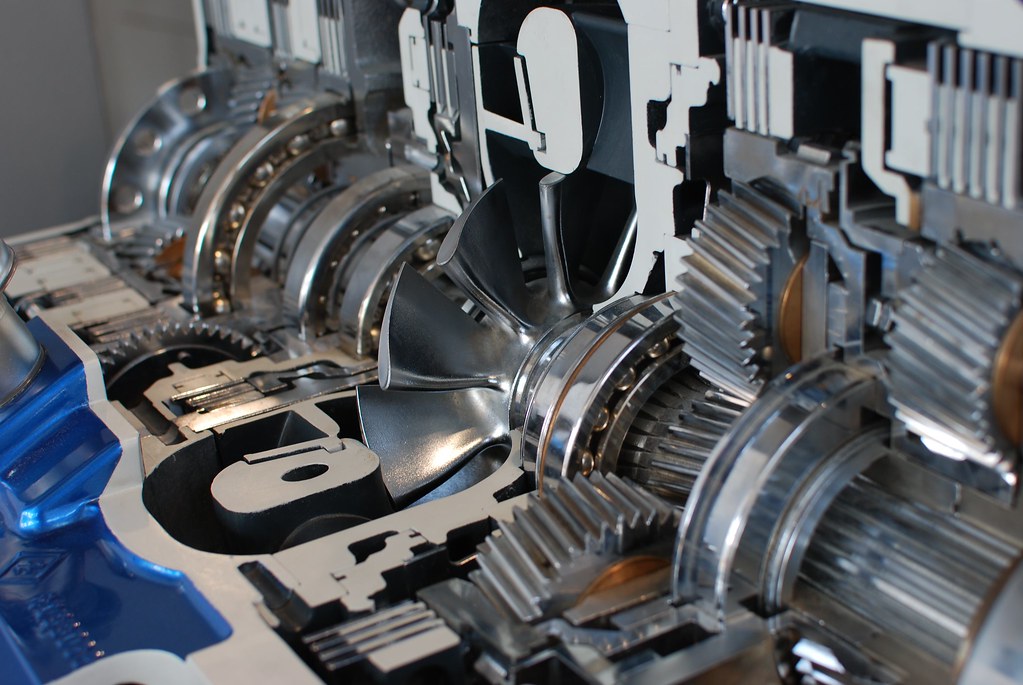
3. **Transmission Replacement**The transmission serves as the vital link between your car’s engine and its wheels, meticulously controlling the flow of power that allows your vehicle to move. Its proper functioning is absolutely critical, and when this complex system fails, the entire car’s operational capacity is compromised, often resulting in one of the most significant financial burdens an owner can face. Replacing a transmission assembly on most cars typically runs between $4,000 and $5,000, but can escalate much higher depending on the specific vehicle and severity of the problem.
Data from RepairPal places average transmission replacement costs at $5,266 to $5,469, while other sources indicate a broader range of $3,000 to over $9,000. These substantial figures are a direct consequence of the transmission’s inherent complexity. It is an intricate system comprised of countless moving and interacting components, all subjected to immense heat and friction. This constant wear and tear makes it prone to eventual failure, necessitating expensive replacement rather than repair.
The labor involved is also a major cost driver, requiring many hours of careful work. Signs your transmission might be in trouble include gears slipping, strange noises, difficulty shifting, a dragging clutch, a burning smell, or a humming noise when parked. These indicators should never be ignored, as early detection can sometimes lead to more affordable repairs than a complete replacement.
Fortunately, several key preventative measures can extend the lifespan of your transmission. Regularly checking and changing your transmission fluid as recommended is paramount, ensuring proper lubrication and cooling. Avoiding aggressive driving habits, such as harsh acceleration or sudden stops, also lessens the strain.
Furthermore, addressing minor transmission slips or fluid leaks immediately can prevent them from escalating into major damage. Allowing the car to warm up before driving in cold weather helps the fluid reach optimal operating temperature. Lastly, avoiding excessive towing loads that push your vehicle beyond its recommended capacity significantly reduces stress on this crucial drivetrain component, potentially saving thousands in future repair bills.
Read more about: Steer Clear: 12 SUVs That Will Drain Your Wallet with Costly Maintenance and Reliability Nightmares

4. **Cylinder Head Replacement**Delving deeper into the engine’s core components reveals another highly expensive repair: the replacement of a cylinder head. This critical part of the internal combustion engine is situated atop the engine block, forming the upper part of the combustion chamber. It houses components like valves, spark plugs, and fuel injectors, playing an indispensable role in sealing the combustion chambers and facilitating the intake and exhaust of gases.
According to RepairPal data, the average cost for a cylinder head replacement ranges significantly, cited at $3,575 to $3,928. This substantial cost positions it among the top three most expensive car repairs, highlighting its critical nature and the complexity involved. The expense can be attributed to both the high cost of the replacement part itself and the extensive labor required to access, remove, and correctly install this intricate engine component.
A damaged or cracked cylinder head can lead to serious engine problems, including coolant or oil leaks, overheating, and loss of engine compression. These issues drastically impair engine performance, leading to misfires and reduced power, ultimately rendering the vehicle unreliable or inoperable. The intricate design and the necessity for precise sealing make its replacement a meticulous and time-consuming task for even experienced mechanics.
While specific preventative measures for cylinder head replacement are not explicitly detailed, general engine maintenance is highly relevant. Ensuring correct coolant levels, using appropriate engine oil, and adhering to scheduled service intervals contribute to overall engine health. Preventing engine overheating is particularly crucial, as excessive heat is a common culprit behind warping or cracking of the cylinder head. Promptly addressing any signs of engine trouble can prevent localized damage from escalating to a full cylinder head replacement.
Read more about: The True Cost of Elegance: 10 Luxury Cars That Deliver Joy or Drain Your Wallet on Maintenance
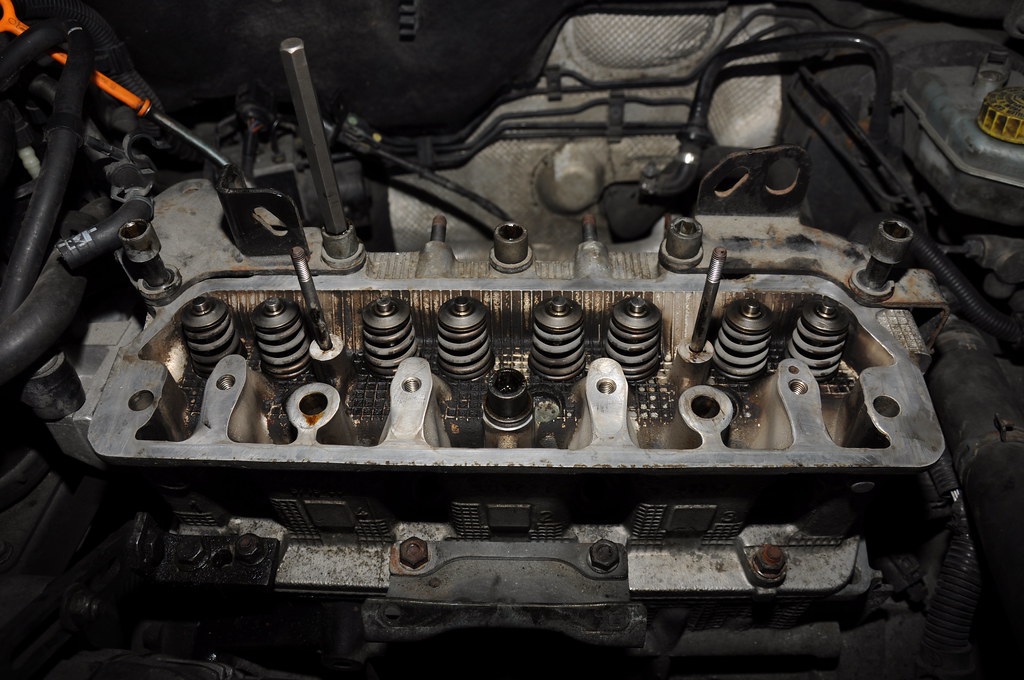
5. **Head Gasket Replacement**The term “blowing a gasket” is ingrained in our language for a reason, often signaling a dramatic and messy malfunction—and in automotive terms, it refers specifically to the head gasket. This crucial component seals the engine cylinders, preventing coolant and oil from leaking out and ensuring proper compression within the combustion chambers. When a head gasket fails, it can lead to a chaotic scenario where coolant and oil spray, white smoke billows from both the engine and exhaust, and the engine quickly overheats.
While the head gasket itself is often described as a relatively cheap car part, potentially costing as little as $15, its replacement is anything but. Average costs for head gasket replacement vary, with RepairPal citing $1,915 to $2,220, and other sources indicating a range of $1,030 to $5,459. The disparity between the part’s cost and the total repair bill highlights the primary driver of its expense: labor.
Replacing a head gasket is an incredibly labor-intensive process, demanding significant time and expertise from mechanics. Estimates suggest that mechanics need anywhere from six hours to several days to complete this repair, depending on the vehicle. When factoring in labor rates that typically range between $100 and $260 an hour, the total cost to replace what appears to be an inexpensive engine part can indeed skyrocket, making it one of the most budget-blowing repairs.
The financial impact is further compounded by the potential for additional damage if the issue is not addressed promptly. The rapid overheating can warp other engine components, leading to even more extensive and costly repairs. This cascading effect underscores the importance of quick action when the initial signs of failure appear.
To avoid this particular expensive repair, car owners should prioritize diligent engine maintenance. Regular oil changes and tune-ups are essential, as proper lubrication and cooling directly impact the head gasket’s integrity. Most critically, consistently watching coolant levels and promptly addressing any drops or leaks can prevent the overheating that often precipitates head gasket failure. Never ignore your “check engine” light; if it illuminates, get the car inspected immediately.
Read more about: The True Cost of Elegance: 10 Luxury Cars That Deliver Joy or Drain Your Wallet on Maintenance
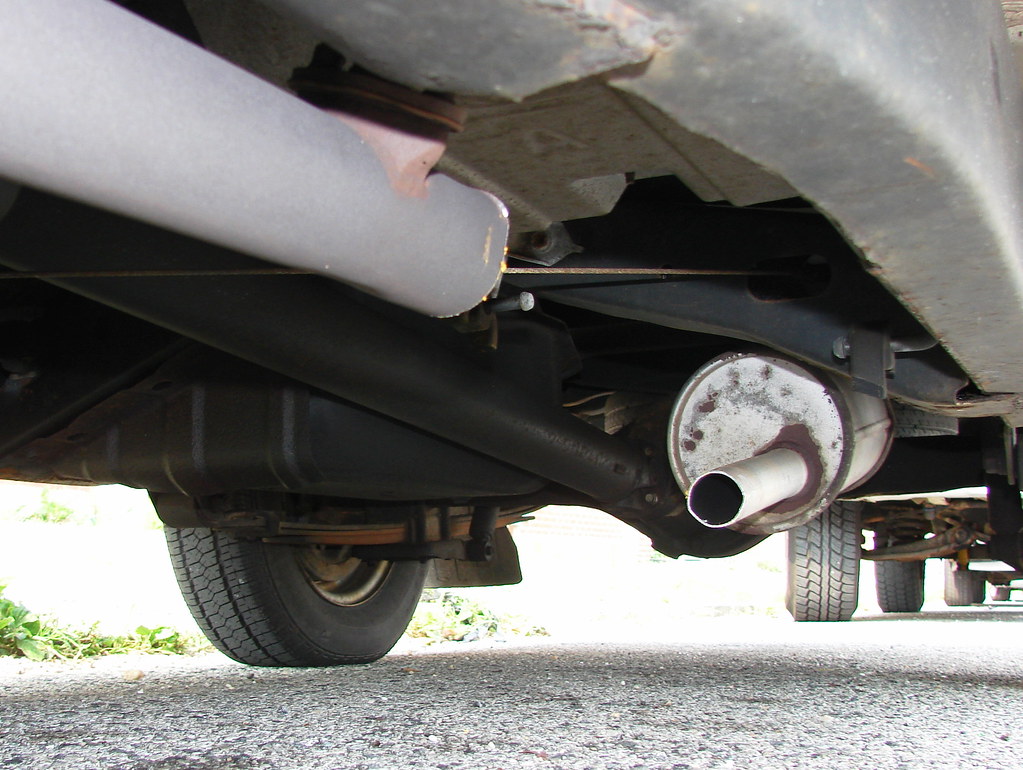
6. **Catalytic Converter Replacement**The catalytic converter is a vital component of your vehicle’s exhaust system, playing a critical role in environmental protection by transforming harmful pollutants in exhaust fumes into less noxious emissions. For motorists in jurisdictions mandating emissions testing, a properly functioning catalytic converter is not just an environmental necessity but a legal requirement. Despite its noble function, this part is infamous for being both expensive to replace and, unfortunately, a prime target for theft due to its valuable internal components.
RepairPal data suggests replacement costs ranging from $2,224 to $2,309, while other sources cite ranges between $1,000 and $3,999. The high cost is primarily driven by the precious metals embedded within the converter—specifically platinum, palladium, and rhodium. These rare materials are essential for the chemical reactions that clean exhaust gases, and their intrinsic value significantly inflates the price of a replacement unit. A considerable portion of the total cost for many expensive repairs goes towards the purchase of the part itself.
A particular challenge with catalytic converters is their repairability; when a problem arises, they can almost never be repaired. They almost always need to be replaced entirely, adding to the financial burden on car owners. Furthermore, due to the high value of these precious metals, catalytic converters have become a frequent target for thieves, who can quickly remove them from vehicles, leaving owners with a substantial and unexpected repair bill.
To mitigate the risk of catalytic converter theft and general failure, several preventative strategies are recommended. Parking your vehicle in well-lit areas or, ideally, in a secured garage, can significantly reduce its vulnerability. Some owners also consider installing a catalytic converter shield or engraving their vehicle identification number (VIN) onto the part as deterrents. Regular exhaust system inspections during routine maintenance can help catch any issues early.
Beyond theft prevention, maintaining the converter’s operational health is crucial. Frequent short trips can lead to a buildup of carbon deposits, impairing efficiency. Occasionally driving on the highway at higher speeds helps burn off these deposits, keeping the system functioning properly. Additionally, using high-quality fuel can prevent issues that might otherwise damage this expensive and environmentally crucial component.
Read more about: Decode Your Dashboard: The Real Reasons Your Car’s Check Engine Light Turns On and How to Fix Them
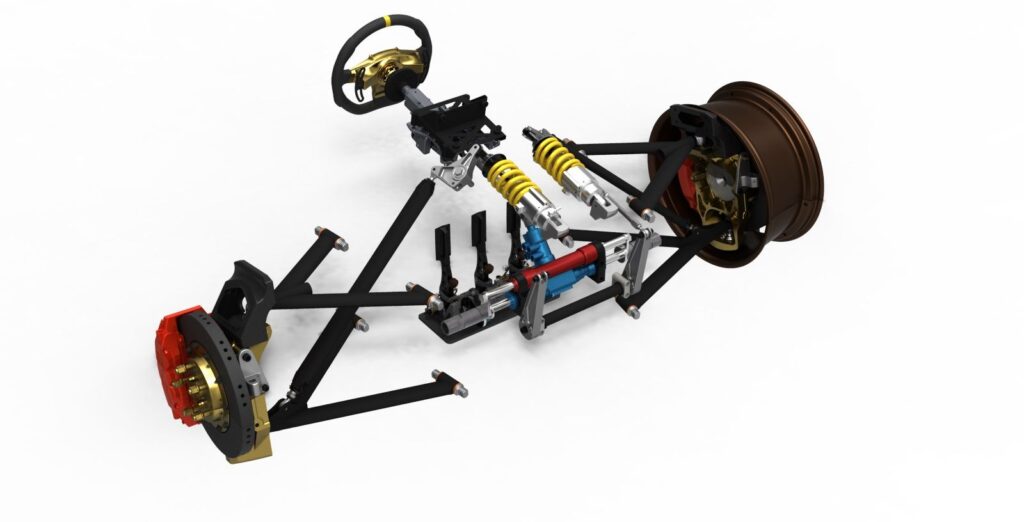
7. **Suspension System Repair or Overhaul**Often overlooked until problems arise, your car’s suspension system is a sophisticated network of components—including shocks, struts, springs, control arms, and tie rods—all working in harmony to provide a smooth, stable, and controlled ride. It’s what shields you from every bump and dip in the road, ensuring comfort and critical handling performance. However, due to constant stress from driving, varying road conditions, and the vehicle’s weight, these components inevitably wear out, leading to costly repairs.
While minor fixes to individual suspension parts might only cost a few hundred dollars, a complete suspension overhaul can be a significant financial undertaking. Various sources indicate that a full suspension system repair can range from $2,500 to $5,000, depending on the extent of the damage and the specific vehicle. The high cost is often attributed to the need to replace multiple interconnected components and the considerable labor involved in dismantling and reassembling this intricate system.
A peculiar observation from industry experience is that even if only one component breaks, mechanics may sometimes recommend replacing the entire suspension system, further driving up costs. This practice makes it prudent for car owners to seek a second opinion when faced with a comprehensive suspension overhaul recommendation. Ignoring initial symptoms of suspension failure can lead to a cascade of problems, exacerbating the damage and inevitably resulting in even more expensive repairs down the line.
Early warning signs that your suspension may need attention include a noticeably rougher ride, unusual noises like clunks or squeaks over bumps, difficulty in controlling the car, uneven tire wear, or excessive bouncing after hitting an imperfection in the road. Addressing these symptoms promptly can prevent minor issues from developing into a full-blown system failure, potentially saving thousands of dollars in the long run.
To prolong the life of your suspension system and avoid these hefty repair bills, proactive measures are key. Whenever possible, avoid potholes and other road hazards that inflict sudden, harsh impacts on your suspension. Replacing worn shocks and struts as needed, rather than waiting for complete failure, can prevent damage to other components. Regular suspension checks, ensuring your tires are properly inflated, and rotating them according to manufacturer recommendations also reduce undue stress on the system.
Navigating the next seven costly vehicle repairs, this section aims to equip car owners with a clear understanding of the expenses associated with essential components, explore factors influencing brand-specific costs, and unpack effective strategies to mitigate major bills. Building on our initial insights, we delve into more repairs that, while perhaps less common, can still deliver a substantial financial shock, underscoring the necessity of informed ownership and preventative action.
Read more about: Wallet Beware: 10 Cars Owners Say Become Major Money Pits After the Initial Thrill

8. **Airbag Replacement (After Deployment)**Airbags are unequivocally one of the greatest safety inventions in automotive history, designed to deploy instantaneously in a collision to protect occupants. While invaluable in saving lives, their deployment often marks the beginning of a significant financial headache for vehicle owners. Once airbags deploy, they are almost always a one-time use system and require replacement, a process far more complex and costly than simply installing new fabric.
The costs associated with airbag replacement can range anywhere from $2,500 to as much as $4,000. This substantial expense isn’t just for the airbag modules themselves, but also for the extensive labor involved in disassembling significant portions of the vehicle’s interior. The repair often necessitates an interior teardown to replace the deployed airbags, which might include modules in the steering wheel, dashboard, seats, and even side curtains, depending on the nature of the impact. Furthermore, the system’s sensors and control module may also need replacement or resetting, adding to the overall bill.
Beyond the airbags, the deployment can also damage other interior components. The steering wheel and glove box, for instance, may also need to be replaced after airbags deploy, further increasing the total repair expense. This makes airbag replacement a multi-faceted and labor-intensive repair, driven by the cost of safety components and the intricate work required to restore the vehicle’s safety systems to their original, fully functional state.
To mitigate the risk of this expensive repair, the most direct approach is to prioritize defensive driving. Practicing safe driving habits reduces the likelihood of being involved in an accident where airbags would deploy. While an accident may not always be avoidable, driving defensively helps minimize risks and can prevent the need for this crucial, yet costly, safety component replacement.

9. **Timing Belt Replacement**The timing belt is a critical component located deep within your engine, playing an indispensable role in its operation. Its primary function is to synchronize the rotation of the camshaft and crankshaft, ensuring that the engine’s valves open and close at the precise time the pistons move up and down. This precise choreography is vital for the engine to run smoothly and efficiently, making the timing belt a silent but absolutely essential part of your vehicle’s internal combustion system.
A worn-out or broken timing belt can cause catastrophic damage to your engine, making its replacement a crucial preventative measure. If this belt breaks while the engine is running, the pistons can collide with the valves, resulting in severe engine damage that can often lead to a full engine replacement—a repair far more costly than the belt itself. Costs for replacing a timing belt typically range from $1,000 to $2,500, depending on the vehicle’s make and model, primarily due to the significant labor involved in accessing and replacing the belt.
Many timing belts often fail without obvious warning signs, making adherence to a replacement schedule paramount. Unlike some components that exhibit clear symptoms of wear, a timing belt can snap unexpectedly, bringing your vehicle to an immediate and potentially damaging halt. If your car uses a timing chain instead of a belt, regular oil changes are essential, as timing chains rely on proper lubrication to avoid premature wear and prevent costly repairs down the line.
To avoid this potentially catastrophic and expensive repair, it is crucial to follow your vehicle’s manufacturer-recommended timing belt replacement schedule. Most manufacturers recommend replacing it every 60,000 to 100,000 miles, depending on the specific vehicle and engine. Don’t wait for signs of wear; proactive replacement based on mileage or time intervals is the most effective way to prevent sudden failure and the severe engine damage that can result.
Read more about: Wallet Beware: 10 Cars Owners Say Become Major Money Pits After the Initial Thrill

10. **Fuel Injector Replacement**Fuel injectors are precision components that play a vital role in your engine’s performance and fuel efficiency. These small, electronically controlled valves are responsible for delivering a fine mist of fuel into the engine’s combustion chambers at precisely the right moment. Their accurate and consistent operation is crucial for optimal fuel atomization, ensuring complete combustion, maximum power output, and minimal emissions from your vehicle.
When fuel injectors become clogged, dirty, or worn, they can cause a range of engine problems, significantly impacting performance. Common symptoms include rough idling, engine misfires, a noticeable decrease in fuel efficiency, and a general loss of engine power. The cost of replacing fuel injectors typically ranges from $634 to $2,000, influenced by the vehicle’s make and model, the number of injectors, and whether they are easily accessible. The expense is driven by the precision of the parts and the labor involved in their removal and installation.
Over time, several factors can contribute to injector failure. Ethanol buildup in fuel, carbon deposits from lower-quality fuels, and general wear can clog injectors, reducing their efficiency and leading to the aforementioned engine misfires. These blockages prevent the injectors from spraying fuel in the fine, consistent pattern required for efficient combustion, leading to reduced performance and potential damage to other engine components if left unaddressed. Avoiding running your fuel tank too low is also advised, as debris at the bottom of the tank can be drawn into the fuel system and clog injectors.
To avoid the expense of fuel injector replacement, owners should prioritize using high-quality fuel, which helps minimize deposit buildup. Periodically using a quality fuel injector cleaner, as recommended by the manufacturer, can also help prevent clogging and maintain optimal performance. Additionally, replacing the fuel filter as part of your vehicle’s routine maintenance schedule is essential; a clean fuel filter ensures that contaminants are removed before they can reach and damage the delicate fuel injectors, extending their lifespan.
Read more about: Buyer Warning: 9 Sports Cars That Become Reliability Nightmares Before 50,000 Miles
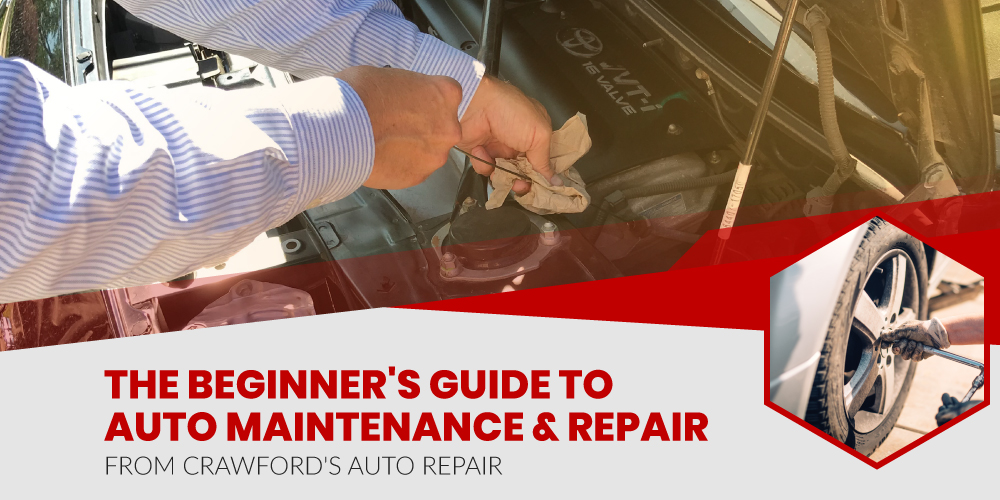
11. **Brake System Repair**The braking system is arguably the most critical safety feature on any vehicle, designed to bring your car to a controlled stop reliably and efficiently. It’s a complex network of components, including rotors, pads, calipers, and the master cylinder, all working in unison to translate pedal pressure into stopping power. Any compromise in this system not only affects driving comfort but poses a direct threat to occupant safety and the safety of others on the road.
When components within the braking system begin to fail, the repair costs can be substantial, ranging anywhere from $1,000 to $4,000, depending on the extent of the damage and your specific vehicle type. This wide range reflects the variability in repairs, which could involve replacing just pads and rotors on one axle, or extending to calipers, brake lines, or even the master cylinder if the damage is more widespread. The complexity and critical safety function of the system necessitate high-quality parts and expert labor, contributing to the elevated costs.
Early warning signs of brake system issues should never be ignored. These can include squeaking or grinding noises when braking, a soft or spongy brake pedal, the car pulling to one side during braking, or a vibrating steering wheel. These symptoms indicate that components are wearing out or malfunctioning, and addressing them promptly is crucial. Ignoring these signs can lead to more extensive damage, such as warped rotors or seized calipers, escalating what could have been a minor repair into a major, more expensive overhaul.
To avoid significant brake system repair bills, proactive maintenance and attentive driving habits are essential. It’s vital to replace brake pads before they wear down completely, as metal-on-metal contact will quickly damage rotors and calipers. Flushing the brake fluid periodically, as per manufacturer recommendations, prevents corrosion within the brake lines and master cylinder, extending the life of these crucial components. Furthermore, avoiding riding the brakes, especially on downhill slopes or in heavy traffic, helps prevent excessive heat buildup that can prematurely wear down pads, warp rotors, and stress calipers.
Read more about: Steer Clear: 12 SUVs That Will Drain Your Wallet with Costly Maintenance and Reliability Nightmares
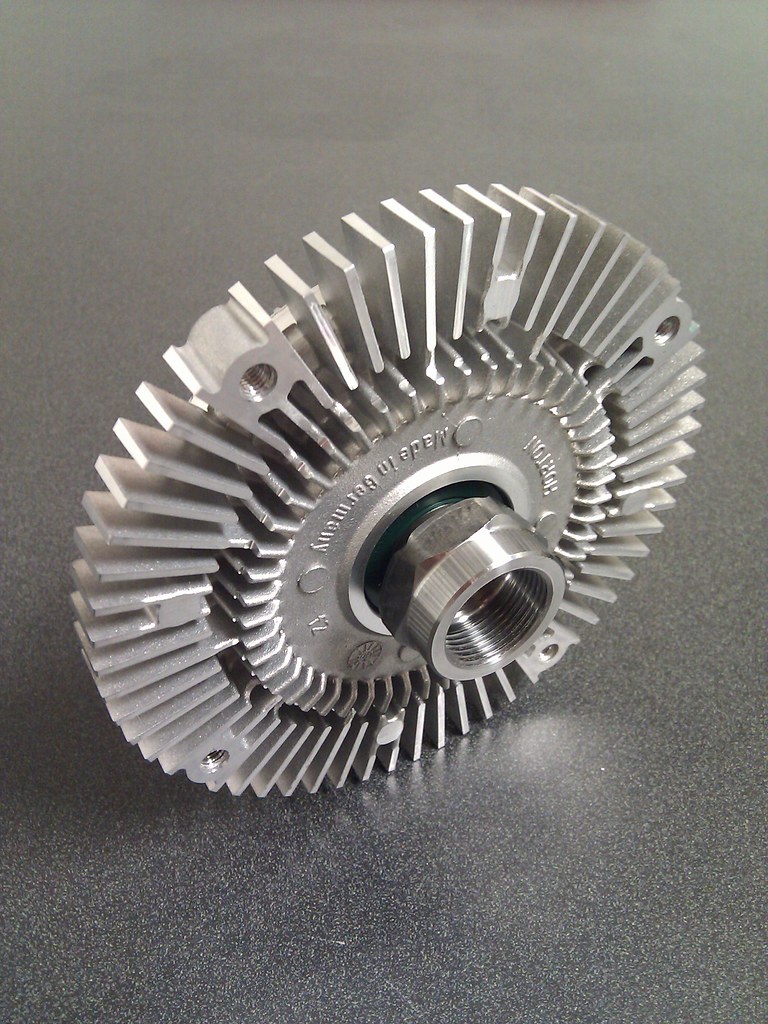
12. **Clutch Replacement**For vehicles equipped with manual transmissions, the clutch is an indispensable component, acting as the crucial link between the engine and the gearbox. It enables the driver to smoothly engage and disengage power from the engine to the wheels, facilitating gear changes without grinding and allowing the vehicle to come to a complete stop without stalling. Constant engagement and disengagement mean the clutch assembly is subjected to immense friction and wear, making it a common candidate for eventual replacement.
When a clutch wears out or fails, symptoms often include difficulty shifting gears, a burning smell, engine revving without corresponding acceleration (slipping), or a clutch pedal that feels too soft or too hard. Replacing a clutch assembly is a significant undertaking, primarily because it necessitates the removal of the transmission, which is a labor-intensive process. The typical cost for clutch replacement ranges from $1,200 to $1,500, with the bulk of this expense attributed to the many hours of labor required to access, replace, and reassemble the components.
The cost is driven by both the parts themselves—the clutch disc, pressure plate, and throw-out bearing typically come as a kit—and the extensive labor involved in dismounting and remounting the entire transmission assembly. This makes it a repair that can quickly drain a budget, particularly if associated components, such as the flywheel, also require replacement due to wear or damage.
Preventing premature clutch wear largely comes down to driving technique. Practicing smooth shifting, avoiding unnecessary clutch slipping, and not resting your foot on the clutch pedal while driving can significantly extend its lifespan. Ensuring you fully depress the clutch pedal when changing gears and avoiding aggressive acceleration from a stop also reduces strain on the clutch. Proper driving habits are the most effective ‘smart tip’ for manual transmission owners looking to avoid this costly repair.
Read more about: The True Cost of Elegance: 10 Luxury Cars That Deliver Joy or Drain Your Wallet on Maintenance
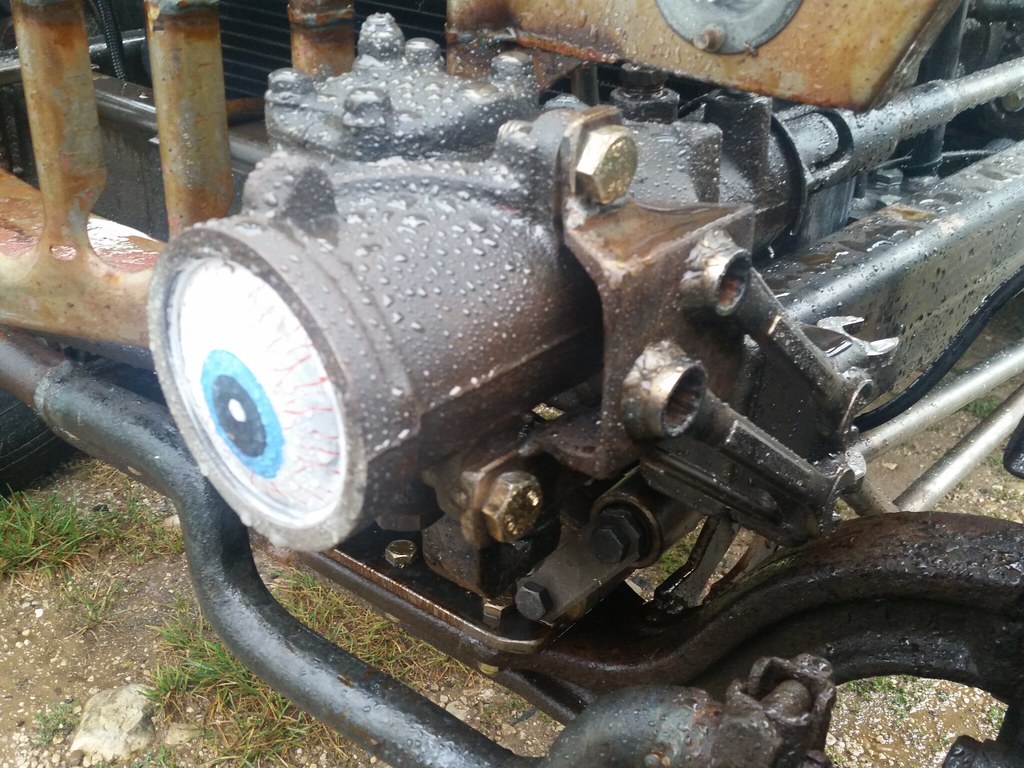
13. **Power Steering Pump Replacement**The power steering pump is a vital part of your vehicle’s steering system, designed to assist the driver in turning the wheels, making maneuvers and everyday driving significantly easier. This pump circulates hydraulic fluid under pressure, which then helps amplify the driver’s input, reducing the effort required to steer. Without a functioning power steering pump, controlling the vehicle becomes considerably more challenging and physically demanding, impacting safety and driving comfort.
When a power steering pump fails, common signs include a whining or groaning noise, especially when turning the steering wheel, difficulty in turning the wheel, or a noticeable leak of power steering fluid. The cost for replacing a power steering pump typically ranges between $500 and $1,500, depending on the car’s make and model. This expense encompasses both the cost of the new pump and the labor involved in its installation, which often includes flushing and refilling the power steering system.
The repair costs can escalate if the pump failure leads to further damage within the power steering system, such as contamination or damage to the steering rack. A failing pump can also lead to air entering the system, causing fluid foaming and reduced effectiveness. Ignoring initial symptoms can transform what might have been a straightforward pump replacement into a more complex and expensive repair involving multiple components.
To prevent the need for power steering pump replacement, regular checks of your power steering fluid levels are crucial. Addressing any observed leaks promptly can prevent the pump from running dry, which is a common cause of failure. If you hear a whining noise while turning, it’s a clear indicator that the system should be inspected by a professional before the problem worsens. Additionally, avoiding consistently turning the steering wheel to its maximum lock position and holding it there can reduce undue strain on the pump, contributing to its longevity.
Read more about: Buyer Beware: 10 SUVs Prone to Costly Repairs Before 90,000 Miles, According to Experts
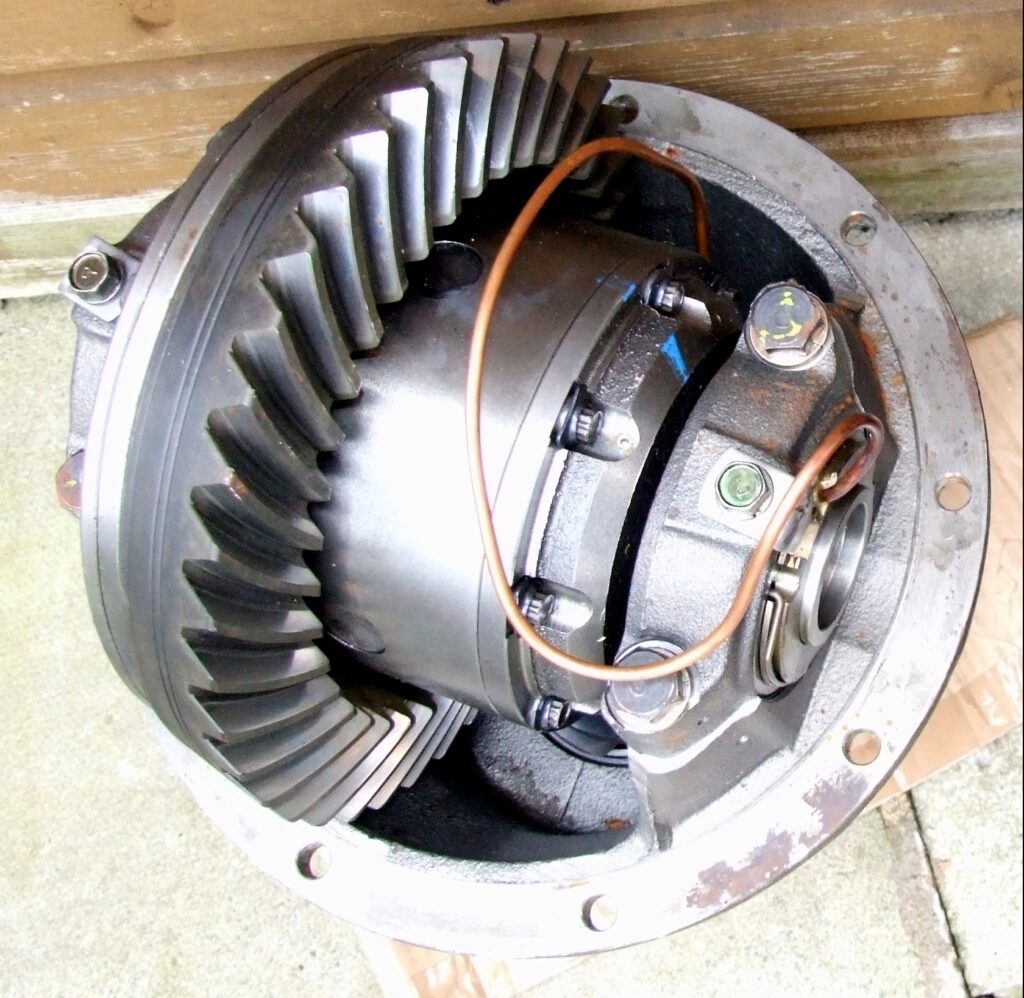
14. **Differential Repair**The differential is a highly engineered component crucial to a vehicle’s drivetrain, particularly evident when turning. Its primary function is to allow the wheels on the same axle to rotate at different speeds while still transmitting power from the engine. This capability is essential because when a vehicle turns, the inner wheel travels a shorter distance than the outer wheel, necessitating different rotational speeds for smooth and controlled cornering. Without a functioning differential, tires would scrub, and the vehicle would handle poorly.
When the differential begins to fail, it can lead to a host of noticeable issues, often resulting in costly repairs. Common signs of differential problems include grinding noises when turning, especially during low-speed maneuvers, a clunking sound upon acceleration or deceleration, or noticeable vibrations from the rear of the vehicle. These symptoms indicate internal wear or damage to the gears and bearings within the differential assembly, which are under constant stress.
Differential repairs can range significantly in cost, typically from $1,000 to $4,000. This wide range accounts for the complexity of the repair, the specific type of differential (e.g., open, limited-slip, locking), and the extent of the internal damage. The expense is driven by the intricate nature of the gears, bearings, and seals within the assembly, as well as the specialized labor required to dismantle, repair, or replace the unit and then accurately reassemble it.
To prolong the life of your differential and avoid these substantial repair bills, proper maintenance is key. Having your differential fluid checked and changed as recommended by your vehicle’s manufacturer is paramount. This specialized fluid lubricates the gears and bearings, and over time it can break down or become contaminated, leading to increased wear. Addressing strange noises or vibrations from the rear of your vehicle immediately can prevent minor issues from escalating. Furthermore, avoiding sudden accelerations, excessive wheel spinning, and heavy towing loads that exceed your vehicle’s capacity can significantly reduce stress on the differential gears, helping to maintain its integrity.
**Final Thoughts on Mitigating Repair Costs**
As we’ve explored the spectrum of expensive car repairs, a clear theme emerges: proactive management is your best defense against financially crippling automotive issues. Understanding these potential pitfalls is the first step, but action is what truly saves you money and extends your vehicle’s life. Beyond the specific preventative measures for each component, there are overarching strategies every car owner should adopt. Purchasing a reliable vehicle, ideally one with a strong factory warranty like those from Hyundai or Mitsubishi, provides a crucial buffer against early repair costs.
Read more about: Steer Clear: 12 SUVs That Will Drain Your Wallet with Costly Maintenance and Reliability Nightmares
Adhering to your owner’s manual for regular maintenance, from routine oil changes to inspecting belts and fluid levels every six months, is not just a recommendation—it’s an investment. These small, consistent efforts are vastly more affordable than rectifying the major damage that neglect can cause. Even seemingly minor habits like regular car washes can prevent rust and corrosion, saving you from expensive repairs like a CV axle replacement. Ultimately, informed choices, diligent maintenance, and prompt attention to warning signs empower you to navigate the complexities of car ownership with greater confidence and a healthier wallet.



